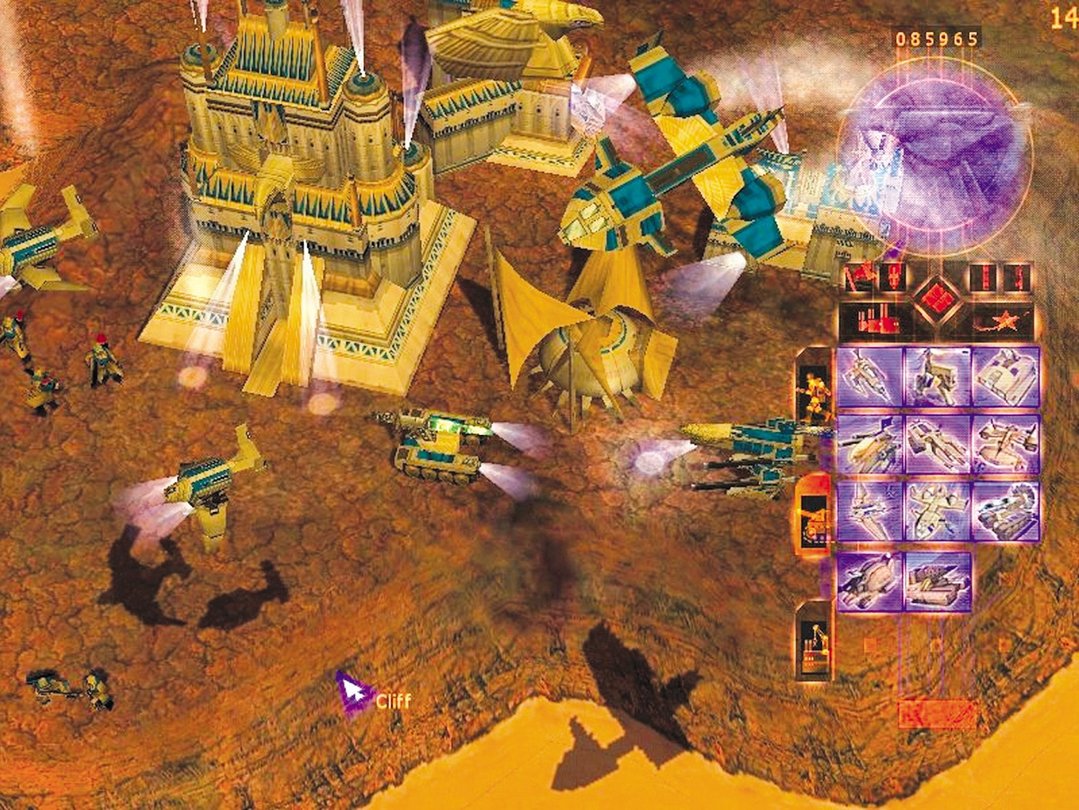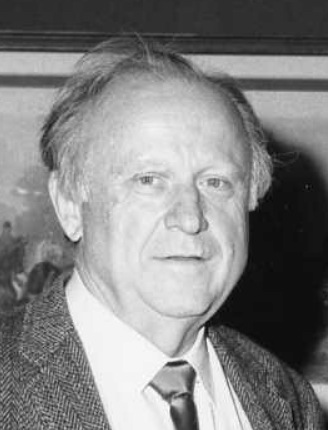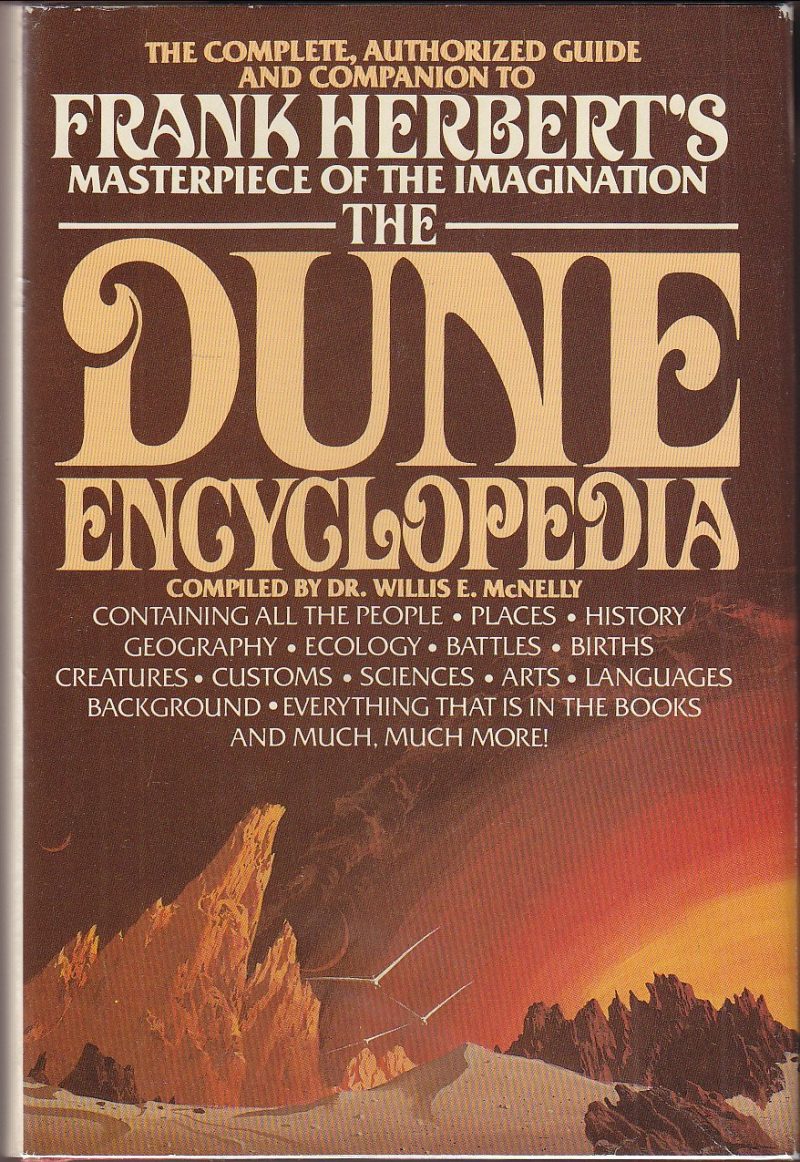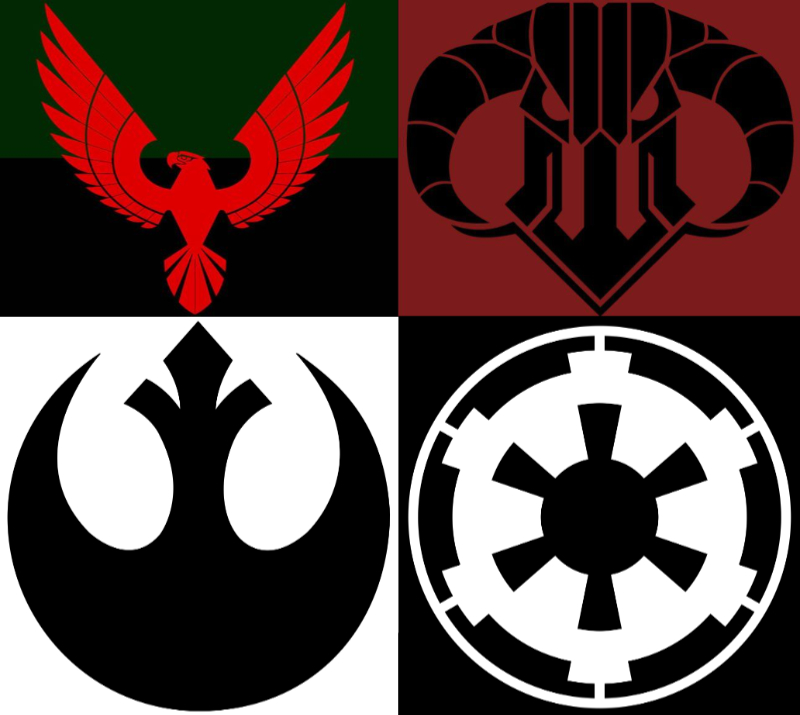
Dune (1992)
1992’s Dune from Cryo Interactive/Virgin Interactive blends adventure with strategy. Loosely following the story of the 1965 novel Dune and using many visual elements from the 1984 film of the same name by David Lynch, the game casts the player as Paul Atreides, with the ultimate goal of driving the Harkonnens from the planet Dune and taking control of its valuable export, the spice. Key to success is the management of spice mining, military forces, and ecology as the player amasses allies and skills.
https://en.wikipedia.org/wiki/List_of_games_based_on_Dune
Dune II (1992)Dune II: The Building of a Dynasty, later retitled Dune II: Battle for Arrakis for the Mega Drive/Genesis port, was released in December 1992 from Westwood Studios/Virgin Interactive. Often considered to be the first „mainstream modern real-time strategy game“, Dune II established many conventions of the genre. Only loosely connected to the plot of the novels or films, the game pits three interplanetary houses — the Atreides, the Harkonnens, and the Ordos — against each other for control of the planet Arrakis and its valuable spice, all while fending off the destructive natural forces of the harsh desert planet itself.
https://en.wikipedia.org/wiki/List_of_games_based_on_Dune
Dune 2000 (1998)
Dune 2000, a 1998 remake of Dune II from Intelligent Games/Westwood Studios/Virgin Interactive, added improved graphics and live-action cutscenes. Though gameplay is similar to its predecessor, Dune 2000 features an enhanced storyline and functionality.
https://en.wikipedia.org/wiki/List_of_games_based_on_Dune

Emperor: Battle for Dune (2001)
Emperor: Battle for Dune (Intelligent Games/Westwood Studios/Electronic Arts) was released on June 12, 2001. A sequel to Dune 2000, the real-time strategy game features 3D graphics and live-action cutscenes, and casts players as Atreides, Harkonnens, or Ordos.
https://en.wikipedia.org/wiki/List_of_games_based_on_Dune

Dune Legacy
Dune Legacy is an effort by a handful of developers to revitalize the first-ever real-time strategy game.
It tries to be as similar as possible to the original gameplay but to integrate user interface features most modern realtime-strategy games have like selecting multiple units
http://dunelegacy.sourceforge.net/website/
Dune is a 1992 adventure strategy video game, based upon Frank Herbert’s science fiction novel of the same name. It was developed by Cryo Interactive and published by Virgin Games.
Dune blends adventure with economic and military strategy. Loosely following the story of the novel, the game casts the player as Paul Atreides, with the ultimate goal of driving the Harkonnen from Planet Dune, while managing spice extraction, military, and later, ecology through the native Fremen tribes. As the player progresses, his troops are equipped with weapons from „crysknives“ to atomics, tap into Paul’s latent psychic powers and get acquainted with such characters from the book as Chani and Liet-Kynes.
https://en.wikipedia.org/wiki/Dune_(video_game)
On 19 September 1990, after a change in management, Virgin threatened to cancel the production.[1][3] No contract had yet been signed; the developers feared all their work would be lost.
Frank Herman managed to salvage the project, but the American backers, including Martin Alper, pulled out. Alper entrusted the electronic adaptation rights of Dune to an American studio, Westwood Studios, at a meeting in Las Vegas.[4]
The developers, working on the game practically in secret, ended up with a design document more than 100 pages long.[2]
The game was inspired by the novel by Frank Herbert, but also by David Lynch’s film. Feyd-Rautha, for example, retained the likeness of Sting, but the majority of the characters were completely redesigned by Jean-Jacques Chaubin. Also adapted from the film is the „weirding module“, a weapon that does not exist in the novel. The graphics were created for VGA 256 color mode.[5] In early 1991, the Gulf War seemed to echo the themes of Dune and Ulrich was inspired to integrate images recalling the night bombing of Baghdad into the game.[1]
In April 1991, Sega bought Virgin’s European operations and Cryo lost Jean-Martial Lefranc, its intermediary with the publisher’s general management. Their new manager, Christian Brecheteau, discovered that Virgin Entertainment had financed Cryo in secret, but fortunately expressed interest in the project.[1] An audit of the accounts of Sega France, which absorbed Virgin Loisirs, was carried out. Management now realized that the development of Dune in France was still being funded, while Sega had not obtained the Dune license.
Members of the Cryo team rushed to London to meet with Martin Alper to present their work samples and hopefully save the project.[1] Alper and Bishop were excited by the early prototypes and they reversed their cancellation decision, despite still having another Dune project under development. They gave Cryo five weeks to present a prototype able to satisfy the American public.
The plot was modified from the novel and the developers chose to start the game with the arrival of Paul on Arrakis.[1] A few weeks later, they sent a prototype to the United States. Alper was impressed not only by the game but also by the soundtrack, which he wanted to release on CD. In September 1991, he signed the game Dune and a second game, KGB, which Ulrich had proposed to him at the European Computer Trade Show in London in 1990.[1][3] In October 1991, the game was in pre-beta, with a demo version planned.[5] On 27 September 1991, Virgin Games USA signed an agreement with Sega for an adaptation of Dune for Mega-CD.[1]
https://en.wikipedia.org/wiki/Dune_(video_game)#Trouble
In January 1992, after this comeback, Ulrich, Herbulot and Lefranc spun off Cryo Interactive as an independent company. Cryo’s Dune arrived in stores before Westwood’s game, which was eventually renamed Dune II. The development of Dune cost 3 million francs, of which 800,000 was used by Cryo.[1] With the signing of the distribution contract, Cryo was granted a budget of 600,000 francs.[1]
Cryo planned a number of ports, to Atari ST, Amiga, CD32, Super Nintendo and possibly NES and Master System.[5] Most never saw the light of day. Philippe Ulrich also planned a sequel to the game, which this time would place the player on the side of the Harkonnens.[2]
Dune was one of the first floppy disk games to be ported to the new CD format. This was thanks to Ulrich’s willingness to exploit this new medium, despite initial opposition from David Bishop.[1][6] The Sega Mega-CD version had graphics close to the Amiga version’s, but offered the extras of the DOS CD-ROM version: snippets from Lynch’s film, voice acting and new travelling animations.
Mega placed the game at No. 10 in their Top Mega CD Games of All Time.[7]
https://en.wikipedia.org/wiki/Dune_(video_game)#Aftermath
Dune II: The Building of a Dynasty (titled Dune II: Battle for Arrakis in Europe and Dune: The Battle for Arrakis for the North American Mega Drive/Genesis port respectively) is a real-time strategy Dune video game developed by Westwood Studios and released by Virgin Games in December 1992. It is based upon David Lynch’s 1984 movie Dune, an adaptation of Frank Herbert’s science fiction novel of the same name.
While not necessarily the first real-time strategy (RTS) video game, Dune II established the format that would be followed for years to come.[1][2] As such, Dune II is the archetypal „real-time strategy“ game. Striking a balance between complexity and innovation, it was a huge success and laid the foundation for Command & Conquer, Warcraft, and many other RTS games that followed.
Emperor Frederick IV of House Corrino is desperate for the harvesting of the valuable drug melange (also known as „the spice“), found only on the planet Arrakis, to pay off all of his debt incurred on internecine wars with family members. To achieve this, he now offers the sole governorship of Arrakis to whichever of the three Houses (Atreides, Harkonnen, and the non-canon Ordos) delivers the most spice for him. War begins as deputations from all three Houses arrive on Arrakis.
The player is a military commander from a House of their choice. In the first few missions the objectives are to establish successfully a base on an unoccupied territory of Arrakis, to harvest spice, and to defeat intruders. Later, when the three Houses divide Arrakis among them, the player has to assault and capture enemy territories. When the player dominates Arrakis on the world map, the two other enemy factions ally against their common enemy. The ultimate final showdown is the battle between the player’s House against three enemy sides, among them Frederick’s forces the Sardaukar (an unplayable elite force whose heavy infantry are particularly powerful). The introductory, mission briefing and endgame cutscenes are different for each House, in keeping with their very disparate world views. The weaponry and units also vary from house to house.
The player takes the role of the commander of one of the three interplanetary houses, the Atreides, the Harkonnen or the Ordos, with the objective of wresting control of Arrakis from the other two houses. House Ordos is not featured in the Dune novels and is mentioned only in the non-canon Dune Encyclopedia. The basic strategy in the game is to harvest spice from the treacherous sand dunes using a harvester vehicle, convert the spice into credits via a refinery and to build military units with these acquired credits in order to fend off and destroy the enemy.
The game map initially starts with a fog of war covering all area which is not covered by the player’s units range of view. As the units explore the map, the darkness is removed. Unlike later games such as Warcraft II: Tides of Darkness, the fog of war is lifted forever with initial exploration; it does not become dark once more when units leave the area.
In addition to enemy incursions, there are other dangers such as the marauding, gigantic sandworm, capable of swallowing vehicles and infantry whole but blocked by rocky terrain. The player can only build on rocky terrain, but must build concrete foundations before to avoid deterioration of the structures due to the harsh weather conditions. Structures will still gradually decay over time regardless of the presence of those concrete slabs due to the aforementioned weather conditions, though the concrete saves repair costs in the long run. Spice fields are indicated by orange coloration on the sand, darker orange indicating high concentration. Some spice may be concealed as bumps on the terrain (a „spice bloom“) that become spice fields when they are shot at, or when a unit runs over them (the unit is destroyed in the ensuing „spice blow“).
The player is presented a map of the planet Arrakis before most missions, where they can choose the next territory to play in among two or three. This affects primarily the enemy house fought in the next mission, as all missions except the first two require the complete destruction of the enemy. Nine territories must be fought, irrespective of house, to reach the endgame.
Some key elements that first appeared in Dune II and later appear in many other RTS games include:
A world map from which the next mission is chosen
Resource-gathering to fund unit construction
Simple base and unit construction
Building construction dependencies (technology tree)
Mobile units that can be deployed as buildings
Different sides/factions (the Houses), each with unique unit-types and super weapons
A context-sensitive mouse cursor to issue commands (introduced in the Mega Drive/Genesis version)
Completing higher missions gives authorization to use improved technology and higher-order weaponry unique to each House, ensuring varied game play. For example, House Harkonnen may be able to construct their Devastator tanks with heavy armor and ordnance but cannot build the similarly impressive Atreides Sonic Tank. The Ordos have access to the Deviator – a specialized tank firing a nerve gas that switches the allegiance of targeted units to Ordos for a limited period of time. The three Houses also are restricted in their production capabilities—House Ordos cannot build Atreides-style trikes, instead making the faster „Raider“ trikes, while House Harkonnen constructs heavier but more expensive quad bikes.
A player can gain access to other Houses‘ special units by capturing an enemy Factory and manufacturing the desired units at the captured Factory (House Atreides‘ Heavy Vehicle Factory for Sonic Tank, House Ordos‘ Light Vehicle Factory for Raider trikes, House Ordos‘ Heavy Vehicle Factory for Deviator tanks, or House Harkonnen’s Heavy Vehicle Factory for Devastator tanks). Note that a Deviator not owned by House Ordos still switches control of targeted units to House Ordos, and not to the side that owns the Deviator. Apparently Westwood was aware of this feature, since capturing a Sardaukar Heavy Vehicle Factory allows the player to build both the Sonic Tank and Devastator, but not the Ordos Deviator.
Buildings may only be built in rocky zones and connected to another existing building. To protect them from constant wear, the player must first place concrete slabs in the construction areas. Production buildings can be upgraded at a cost several times, allowing the production of more advanced units or buildings.
The final prize for the commander is the building of the House Palace from where superweapons may be unleashed on opponents in the final closing chapters of the game. The House Harkonnen superweapon is a long-range powerful but inaccurate finger of missiles called the Death Hand, whereas House Atreides may call upon the local Fremen infantry warriors, over which the player has no control, to engage enemy targets. House Ordos may unleash a fast-moving Saboteur whose main purpose is the destruction of buildings.
The AI of Dune II was one of the first used in RTS games, and while better than that of Herzog Zwei, it has various drawbacks. Examples include only attacking the side of the player’s base facing its own, general inability to perform flanking maneuvers, and not rebuilding defenses.[3] Recent research into the game’s engine by fans revealed that the AI is in fact capable of more advanced strategy, but that a large part of these capabilities is unused due to consistently repeated errors in all of the game’s mission scripts.[4]
According to Virgin Interactive vice president Stephen Clarke-Willson in 1998, the development of Dune II began when Virgin Interactive planned to cancel the production of Cryo Interactive’s adventure game Dune, after which he was given the task of figuring out what to do with the Dune license.[5] After reading the original Dune novel, he decided that „from a gaming point-of-view the real stress was the battle to control the spice,“ so a resource-based strategy video game would be a good idea. It was around this time that employee Graeme Devine (who later founded Trilobyte) introduced to everyone at the Virgin office a real-time strategy game on the Sega Genesis / Mega Drive console called Herzog Zwei (1989). Clarke-Willson described it as a game where the player „kept clicking on stuff and then zooming off to another part of the screen. It was very hard to keep track of what was going on as an observer. Still, everyone liked it, it had fast action, and it was a strategy game.“ Virgin staff, including Clarke-Willson and Seth Mendelsohn (who later worked on the Ultima series), then went to Westwood Studios to talk about making a Dune game. According to Clarke-Willson, „Westwood agreed to make a resource strategy game based on Dune, and agreed to look at Herzog Zwei for design ideas.“ It later turned out that Cryo’s game of the same name was not cancelled, and Westwood’s real-time strategy game was called Dune II as a result.[6]
Westwood Studios co-founder and Dune II producer Brett Sperry said in 2008 that conceptualization for the game began when Virgin president Martin Alper approached him with the offer of using their Dune license to produce a game, with the understanding that Cryo’s Dune had been cancelled. In terms of video game design, Sperry stated, „The inspiration for Dune II was partly from Populous, partly from my work on Eye Of The Beholder and the final and perhaps most crucial part came from an argument I once had with Chuck Kroegel, then vice president of Strategic Simulations Inc … The crux of my argument with Chuck was that wargames sucked because of a lack of innovation and poor design. Chuck felt the category was in a long, slow decline, because the players were moving to more exciting genres … I felt that the genre had a lot of potential – the surface was barely scratched as far as I as [sic] concerned, especially from a design standpoint. So I took it as a personal challenge and figured how to harness realtime dynamics with great game controls into a fast-paced wargame.“ He also stated that, while „Herzog Zwei was a lot of fun,“ the „other inspiration for Dune II was the Mac software interface,“ referring to the „design/interface dynamics of mouse clicking and selecting desktop items“ which got him thinking, „Why not allow the same inside the game environment? Why not a context-sensitive playfield? To hell with all these hot keys, to hell with keyboard as the primary means of manipulating the game!“ During production, he found out that Cryo rushed to finish their game first, leading to Virgin publishing their game as Dune and Westwood’s game as Dune II, despite Sperry protesting against this decision.[7] Louis Castle said in 1998 that the game’s influence on the real-time strategy genre was unplanned, and that the team’s goal was simply „to include all of the excitement and intensity of a war game, but with action-packed gameplay.“[8]
Other influences cited by Joseph Bostic (also known as Joe Bostic), the co-designer and lead programmer, and Mike Legg, one of the game’s programmers, include the turn-based strategy games Military Madness (1989) and Civilization (1991), along with Herzog Zwei. According to Bostic, a „benefit over Herzog Zwei is that we had the advantage of a mouse and keyboard. This greatly facilitated precise player control, which enabled the player to give orders to individual units. The mouse, and the direct control it allowed, was critical in making the RTS genre possible.“[9]
https://en.wikipedia.org/wiki/Dune_II
Dune 2000 is a real-time strategyvideo game, developed by Intelligent Games and released by Westwood Studios in 1998 for Microsoft Windows.[2] It was later ported to the PlayStation in 1999.[3] It is a partial remake of Dune II, which is loosely based on Frank Herbert’s Dune universe.[4] The story of the game is similar to Dune II, and is continued in Emperor: Battle for Dune. The game uses a similar game engine to Westwood’s Command & Conquer: Red Alert. Although Dune 2000 was originally intended to be a remake of Dune II, the plotline differs completely and makes a reference to the execution of Mentat Amon of House Ordos and the replacement of the Harkonnen Mentat from Dune II, Radnor, by Hayt De Vries. The story is told with full motion video.
https://en.wikipedia.org/wiki/Dune_2000
Emperor: Battle for Dune is a Dune video game, released by Westwood Studios on June 12, 2001. It is based in Frank Herbert’s science fictionDune universe. It is the third real-time strategy game set in the Dune universe, following its predecessors, Dune II and Dune 2000. While Dune II was a totally distinct story to that of Dune, and Dune 2000 was a remake of Dune II, Emperor is a direct sequel to the previous games. In particular, it is a sequel to Dune 2000, carrying on from where it left off, with several of the characters and actors returning. Like Dune 2000 and many of the other Westwood games that came before it, Emperor features cut scenes filmed with live actors.
https://en.wikipedia.org/wiki/Emperor:_Battle_for_Dune
Die Herkunft der Ordos

Anders als die Atreides und die Harkonnen die in Frank Herbert’s Dune Büchern vorkommen, wird das House Ordos nur mit einem Satz in The Dune Encyclopida zur Beschreibung des Wappens. Wo die Wappen der Atreides und der Harkonnen den in der Encyclopida beschriebenen ähnlich sind, hat das Ordos Wappen in den Spielen nichts mit dem beschriebenen Wappen gemeinsam.
House Ordos: Or two bones whith per saltire, in dexter chief entwined with ivy vert.
The Dune Encyclopedia
Ein paar Interessante Projekte mit John Rhys-Davies
- 1981: Jäger des verlorenen Schatzes (Raiders of the Lost Ark)
- 1987: James Bond 007 – Der Hauch des Todes (The Living Daylights)
- 1989: Indiana Jones und der letzte Kreuzzug (Indiana Jones and the Last Crusade)
- 1994: Wing Commander 3 (Wing Commander III – Heart of the Tiger) (Videospiel)
- 1995–2000: Sliders – Das Tor in eine fremde Dimension (Sliders, Fernsehserie, 40 Folgen)
- 1996: Wing Commander 4 (Wing Commander IV – The Price of Freedom) (Videospiel)
- 1997: Star Trek: Raumschiff Voyager (Star Trek: Voyager, Fernsehserie, Folgen 3×26, 4×11)
- 1998: Dune 2000 (Videospiel)
- 2001: Der Herr der Ringe: Die Gefährten (The Lord of the Rings: The Fellowship of the Ring)
- 2002: Der Herr der Ringe: Die Zwei Türme (The Lord of the Rings: The Two Towers)
- 2003: Der Herr der Ringe: Die Rückkehr des Königs (The Lord of the Rings: The Return of the King)
- 2007: Schwerter des Königs – Dungeon Siege (In the Name of the King: A Dungeon Siege Tale)
https://de.wikipedia.org/wiki/John_Rhys-Davies
Podcastempfehlung:






